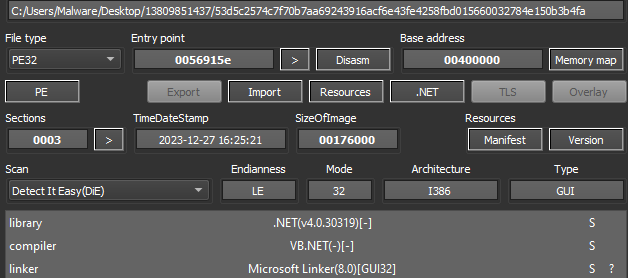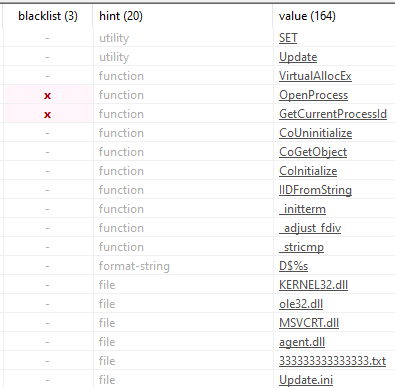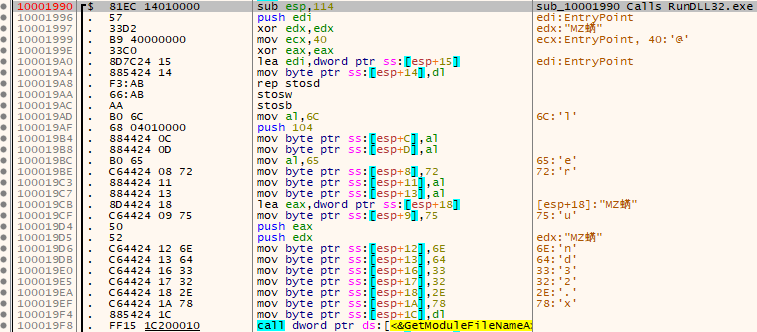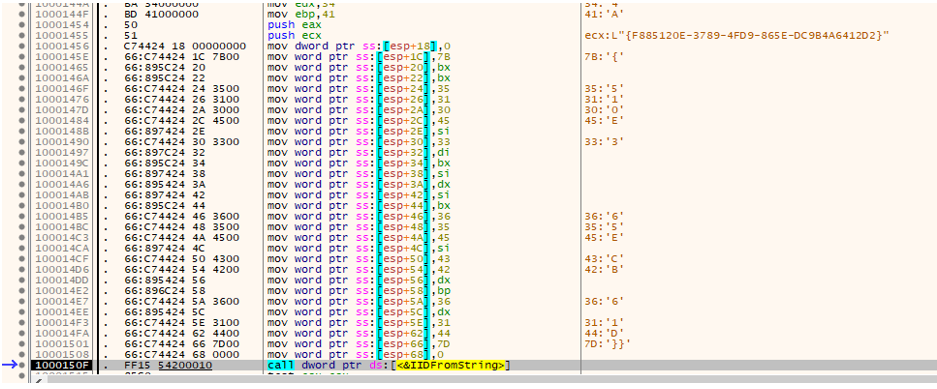Blackwood APT Group Has a New DLL Loader

Overview
This week, the SonicWall Capture Labs threat research team analyzed a sample tied to the Blackwood APT group. This is a DLL that, when loaded onto a victim's computer, will escalate privileges and attempt to install a backdoor for communications monitoring and diversion. It has evasive capabilities and, as of this writing, is targeting companies and individuals in Japan and China.
Technical Overview
The sample is detected as a 32-bit DLL (Figure 1) with no packer or protector. It has minimal strings and no obvious obfuscation or encryption.

Figure 1: Sample detection
Strings show several API calls of concern, including GetCurrentProcessID, OpenProcess and VirtualAlloc – all of which are used to load malicious DLLs into memory. There are also two files listed: ‘333333333333333.txt’ and ‘Update.ini’, as shown in Figure 2.

Figure 2: Static string detection
The name of the file is shown as ‘agent.dll’ (Figure 3) and there is one anonymous export that is only shown as an ordinal value when looking at the file with multiple tools.

Figure 3: Original name and anonymous export
When dynamically analyzing the sample, it has multiple anti-analysis capabilities that prevent most of its function from being observed. It will look for debuggers, processor features and security settings in the registry (Figure 3). There are also locale checks that, when failed, will kill the process.

Figure 4: WMI registry keys being queried for security checks
The anonymous export at address 0x10001A70 is the file calling ‘Rundll32.exe’ for process injection, as shown in Figure 5.

Figure 5: Export address calls sub_10001990, which creates ‘rundll32.exe’
Controlling the program’s execution allows the check for a UAC bypass to be generated. The DLL will attempt to escalate privileges via CMSTPLUA interface. The following strings are created, as shown in Figures 5 and 6:
- Elevation:Administrator!new:{FCC74B77-EC3E-4DD8-A80B-008A702075A9}
- Elevation:Administrator!new:{F885120E-3789-4FD9-865E-DC9B4A6412D2}

https://gist.github.com/hfiref0x/196af729106b780db1c73428b5a5d68d

Figures 6 (top) and 7 (bottom): A function creates GUIDs for privilege escalation
The two files that are listed within the strings are also referenced during runtime (Figure 7), but despite multiple attempts at controlling execution, the files were not observed on test systems.

Figure 8: Update.ini is referenced but never created
Protection
To ensure SonicWall customers are prepared for any exposure that may occur due to this malware, the following signatures have been released:
- MalAgent.Blackwood
IOCs
- 72B81424D6235F17B3FC393958481E0316C63CA7AB9907914B5A737BA1AD2374
Share This Article

An Article By
An Article By
Security News
Security News